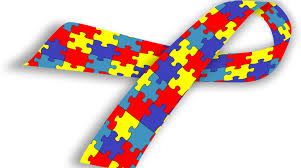Autism
Autism Awareness: Keys to Early Identification
Autism and Early Identification
Posted April 13, 2014

April is Autism Awareness Month. Autism Spectrum Disorder (ASD) is a neurodevelopmental disorder that is associated with difficulties in social interactions, verbal and nonverbal communication, and repetitive behaviors. Symptoms of ASD vary from one child to the next, but these children typically have difficulties in three areas: social impairments (e.g., lack of interest in peer relationships, impaired non-verbal behavior), communication difficulties (e.g., delayed speech, repetitive language), and stereotyped behaviors or restricted interest (e.g., hand flapping, preoccupied interest). According to recent data from the CDC, 1 in 68 children are diagnosed with autism and white children are often diagnosed more than African American or Hispanic children.
Early identification is important to help children with ASD adapt and function in their community. As I previously discussed in a blog post, ethnic minority children are often identified later. The fact that ethnic minority children are less likely to be diagnosed is probably related to many factors (e.g., access to services, misdiagnosis). I believe a key factor in lack of diagnosis of autism is stigma. Although autism is life-long, individuals can make significant adaptive improvements with appropriate treatment. Therefore, it is extremely important for parents to be aware of early warning signs and seek help. The following "red flags" may indicate your child is at risk for an autism spectrum disorder. If your child exhibits any of the following, please don’t delay asking your pediatrician or family doctor for an evaluation or referral for a psychological evaluation:
- No big smiles or other warm, joyful expressions by six months or thereafter
- No back-and-forth sharing of sounds, smiles or other facial expressions by nine months
- No babbling by 12 months
- No back-and-forth gestures such as pointing, showing, reaching or waving by 12 months
- No words by 16 months
- No meaningful, two-word phrases (not including imitating or repeating) by 24 months
- Any loss of speech, babbling or social skills at any age
Treatment Options
The American Psychological Association notes the following treatment options for children with ASD:
- Behavioral therapy may emphasize “operant conditioning,” which uses rewards to encourage good behavior and punishments to discourage bad behavior. This approach can help improve communication and social interaction and decrease troublesome behaviors like aggression or self-injury.
- Cognitive-behavioral therapy, which target thoughts as well as behaviors.
- Social skills training can help children with autism improve their interpersonal functioning. In the classroom, for instance, peers without autism can help those who have the disorder by teaching and modeling appropriate social behavior.
- Integration into regular classrooms is another important advance in the autism field, although some children benefit from inclusion more than others.
Recently, research on young children with autism has shown that Parent-Child Interaction Therapy (PCIT) is promising to treat symptoms of ASD. The new study, published in the journal Clinical Practice in Pediatric Psychology (Lesack, Bearss, Celano, & Sharp, 2014), found that treatment with PCIT helps to improve parenting skills and reduces problem behavior. Although this is promising, more research is needed with these children. My hope is that future research will also study all ethnic/racial groups.
For more information, view this guide from the National Institute of Mental Health (NIMH) for parents on understanding autism and its treatment (http://www.nimh.nih.gov/health/topics/autism-spectrum-disorders-pervasive-developmental-disorders/index.shtml) .
Copyright 2014 Erlanger A. Turner, Ph.D.
You can follow Dr. Turner on Twitter @DrEarlTurner for daily post on psychology, mental health, and parenting. Feel free to join his Facebook group, “Get Psych’d with Dr. T” to discuss today's blog, or to ask further questions about this posting.
References
American Psychological Association http://www.apa.org/topics/autism/index.aspx
Autism Speaks http://www.autismspeaks.org/what-autism/learn-signs
Lesack, R., Bearss, K., Celano, M., & Sharp, W. (2014). Parent-child interaction therapy and autism spectrum disorder: Adaptations with a child with severe developmental delays, Clinical Practice in Pediatric Psychology, 2, 1, 68-82.


